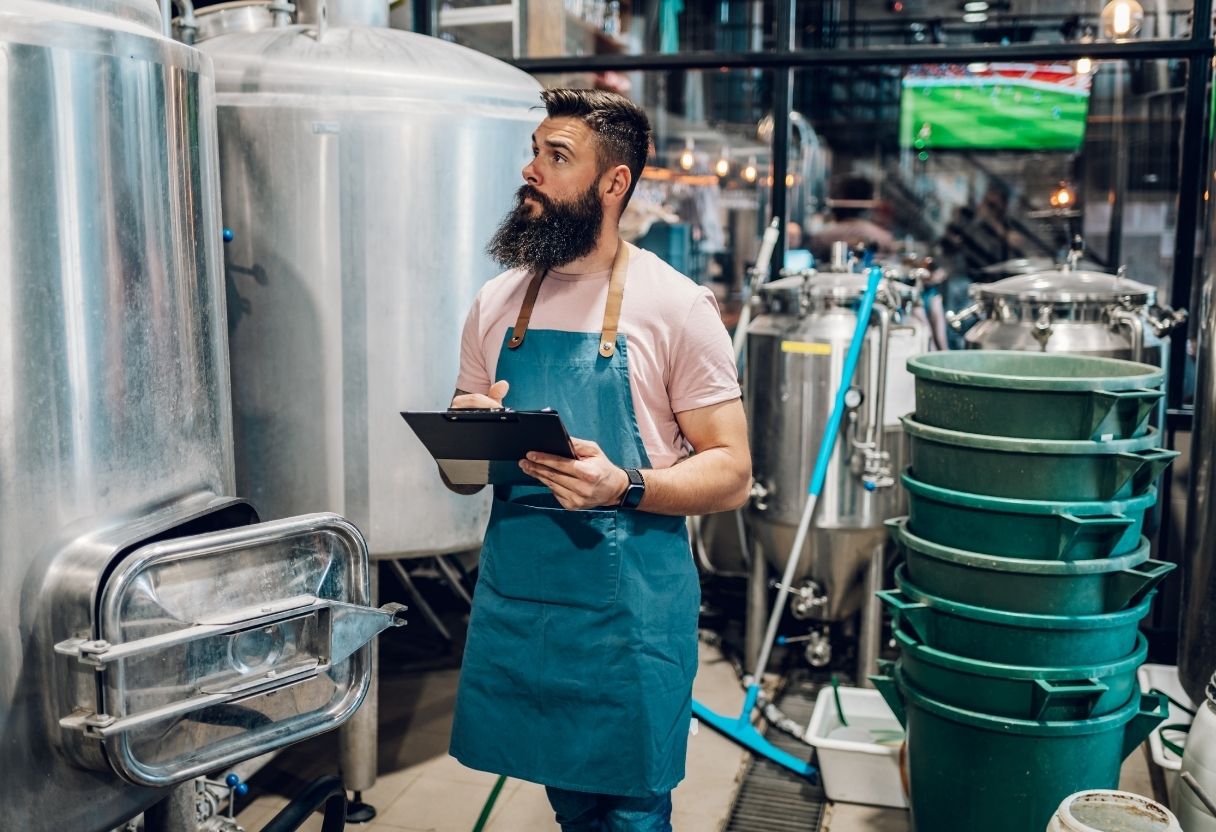Fermentation Temperature Control in Breweries: How GlacierGrid helps

Within the Food and Beverage industry, few factors play a more critical role in a company’s success than temperature control. Whether it’s a global fast-food chain or a mom-and-pop restaurant, storing inventory in the proper temperature range ensures quality, safety, and consistency.
This need to maintain ideal fermentation temperature and humidity levels only double for professional brewers (as well as DIY homebrewers) of wine, spirits, kombucha, lagers, IPAs, and other beers—especially during the fermentation portion of the brewing process. If the fermentation portion of the brewing process occurs outside the correct temperature range, the resulting product may have off-flavors.
Fortunately, GlacierGrid’s IoT temperature monitoring devices can help brewers with fermentation temperature control.
Here’s how.
Why does Fermentation Temperature Control matter?
The brewing process is less of an art and more of a science, especially if you want to maintain consistent quality and taste across batches. What’s more, wine, spirits, kombucha, lagers, and IPAs all have different temp control requirements.
And while there are several stages a grain must go through to become alcohol, fermentation is where the magic happens. Beer fermentation is when yeast strains (such as lager or ale yeasts) transform the glucose in the wort—the liquid extracted from the mashing process—into ethyl alcohol and carbon dioxide while still in the kettle.
In this stage of the process, providing temperature control to the wort in the fermentation vessel is everything.
As an exothermic process, fermentation can generate significant levels of heat. That heat, however, needs to be controlled to protect the integrity of the taste and quality. This is due to several factors:
- Different yeasts (lager and ale yeast specifically) have varied optimal fermentation temperature ranges.
- In the early stages, too much heat in the fermentation vessel can accelerate the fermentation process, producing fusel alcohol and esters, creating off-flavors and aromas.
- Too much heat in the later stages can reduce alcohol yield during the kegging process, even if your keg is submerged in an ice bath.
- Too little heat causes the yeast to become sluggish or shut down entirely.
For brewers of all sizes—from DIY homebrewers to national brands—the integrity of your products’ taste and aroma is critical to continued success.
It’s the Goldilocks conundrum. Your products can’t be too hot or too cold during fermentation.
They need to have just the right temperature.
How GlacierGrid helps everyone from DIY homebrewers to large brands with fermentation temperature control
Traditionally, everyone from homebrewers to large brands managed quality control and temperature monitoring in their fermentation chambers via manual and technological processes. Ultimately, these come with two inescapable flaws:
- Manual processes rely on human integrity and vigilance while also using valuable labor resources.
- Automated sensors (particularly those that utilize WiFi) are often cost-exorbitant, challenging to install, unreliable, and vulnerable to equipment failure or power outages. And when a failure does occur, it could take hours, if not days, to find out—that’s a recipe for spoilage.
GlacierGrid is the modern solution to temperature control.
It’s a 24/7, IoT remote temperature sensor that can protect your inventory—in this case, beverages such as wine, spirits, kombucha, lagers, and IPAs—from the three main culprits for inconsistent temperature and humidity before and during:
- Equipment failures
- Power outages
- Human error
Benefits of GlacierGrid on fermentation temperature control
With GlacierGrid, you can stay in control and take the guesswork out of temperature control throughout every phase of the brewing cycle. Simply place GlacierGrid’s remote temperature sensor in your fermentation vessel or room to measure ambient temperature and humidity.
Ensure the smooth taste of your lager or IPA by setting alerts when the room or fermenter temperature rises above 36°, or when the fermenter temperature doesn’t match what was set on the thermostat. Alternatively, sleep easy knowing bottled beer, or batches stored in carboys, stay between 50 and 55° to won’t be comprised by high ambient temperatures, preserving its bold character.
Other benefits for brewers include:
- Around-the-clock monitoring – GlacierGrid operates on a 24/7 basis, continuously collecting data to ensure that your numbers are accurate, prevent product spoilage, and aid fermentation temperature control. Employees don’t need to log the fermentation temperature manually, whether that be ambient temperature or in your fermenter.
- Smart alert system – GlacierGrid’s proprietary Smart Alert system lets you automatically adjust alert temperature thresholds to ensure that alerts are meaningful.
- Easy integration – GlacierGrid’s sensors connect with no wiring or drilling. GlacierGrid automatically connects to a 4G hub via long-range radio with zero WiFi configuration needed.
- Actionable real-time notifications – Set and receive configurable alerts via SMS, email, or phone call. You can notify an individual or an entire team to ensure that the fermentation temperature issue is immediately resolved and the batch of lager or IPA is saved.
- Premier data visibility – Access the GlacierGrid dashboard using any web-enabled device to realize the real benefits of fermentation temperature control. See real-time data, detailed analytics, historical temperature data, and predictive equipment maintenance.
- Military-grade data security – Your data and IP needs constant protection from cyber threats. We use end-to-end encryption and multiple layers of NSA-approved protocols to ensure your data is always secure.
Fermentation temperature control made easy
Fermentation Temperature Control is one of the most critical aspects of the brewing process.
Too hot, and the yeast will be stressed, creating off-flavors and aromas. Too cold, the yeast will grow sluggish, increasing fermentation time and creating an opportunity to grow contaminants like bacteria.
If you want to maintain a consistent taste, aroma, and quality across the board, you must ensure that the brew stays within the right temperature threshold throughout every phase.
For that, there’s GlacierGrid.
Interested in working with GlacierGrid?
To see how GlacierGrid can help your brewery operate more efficiently and sustainably, click below to buy today.







